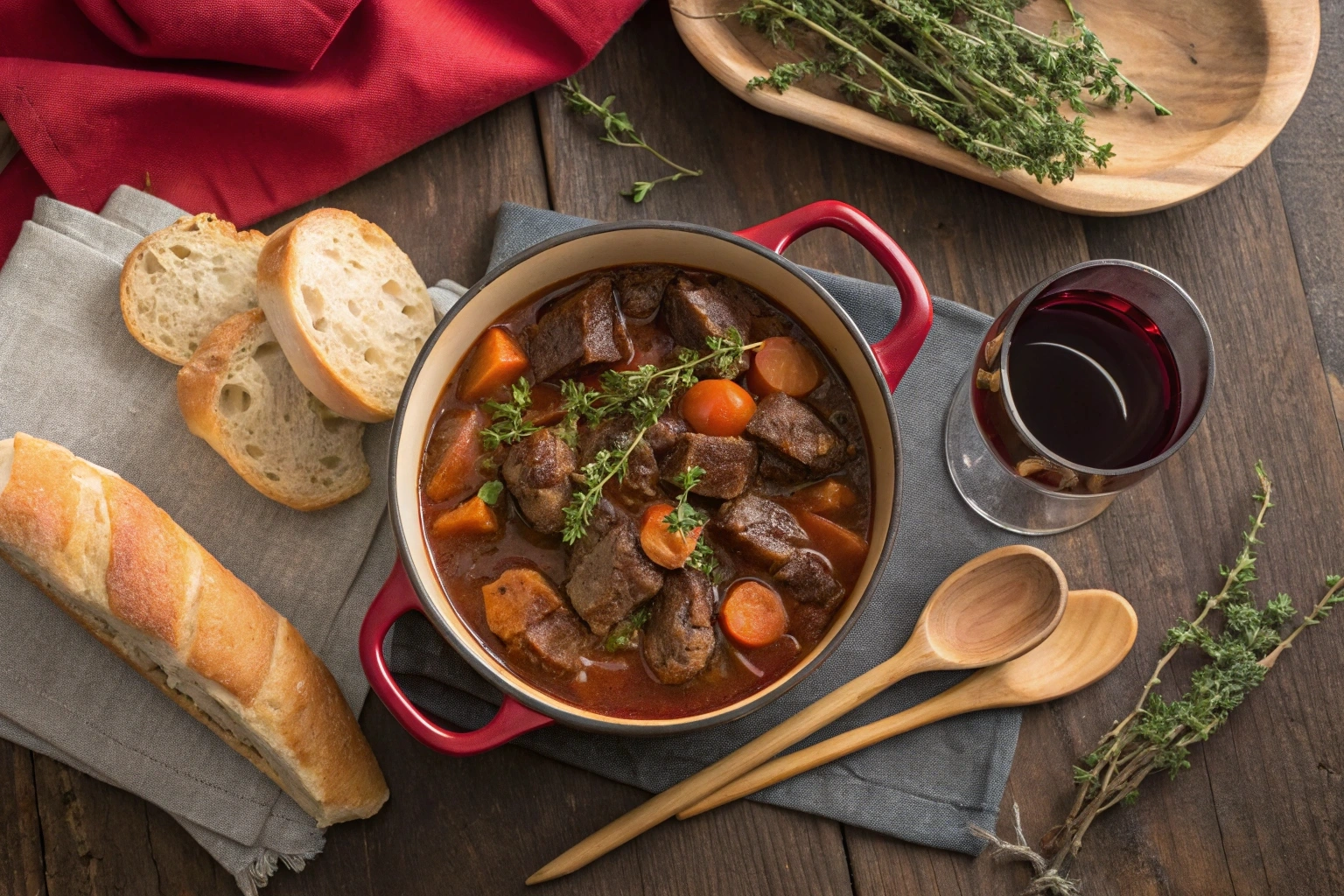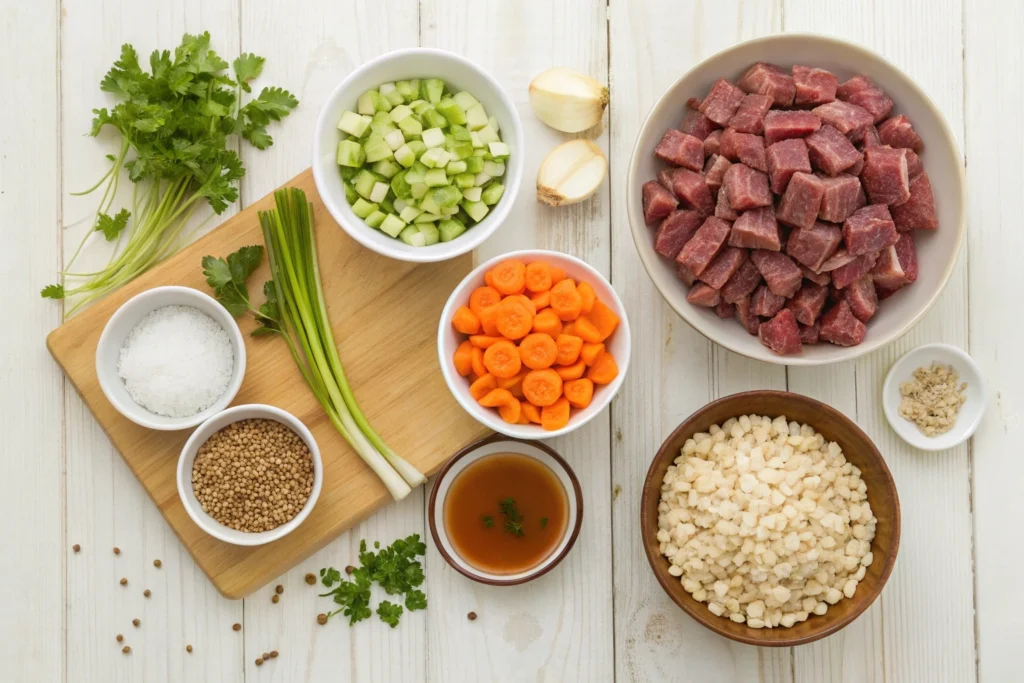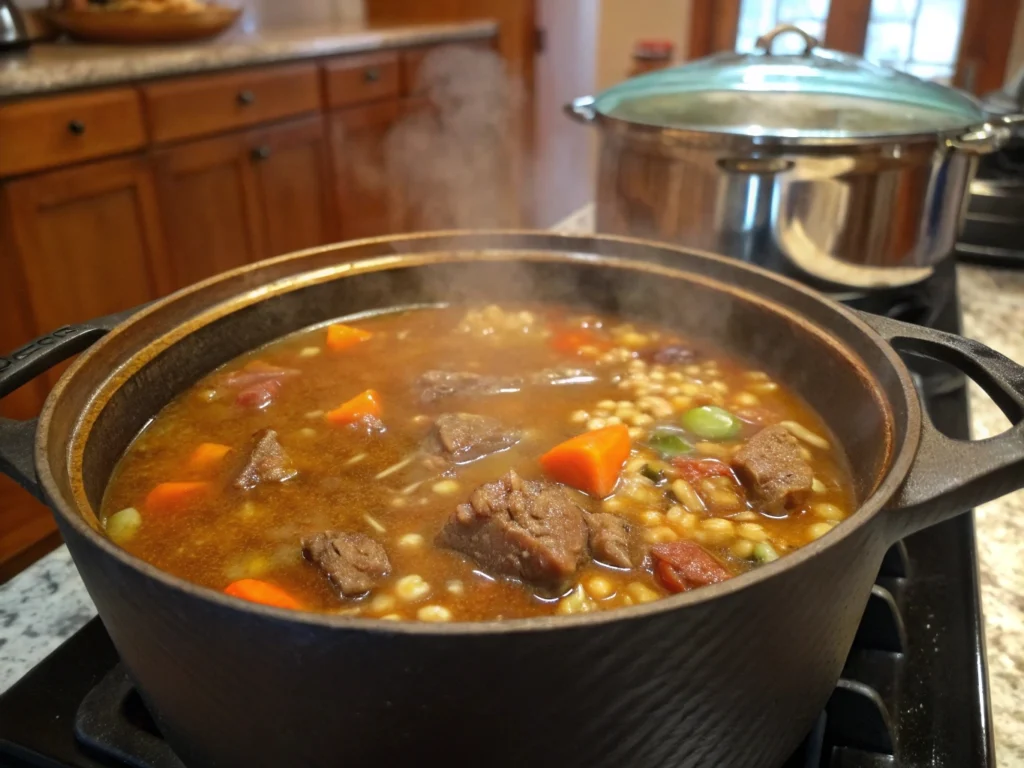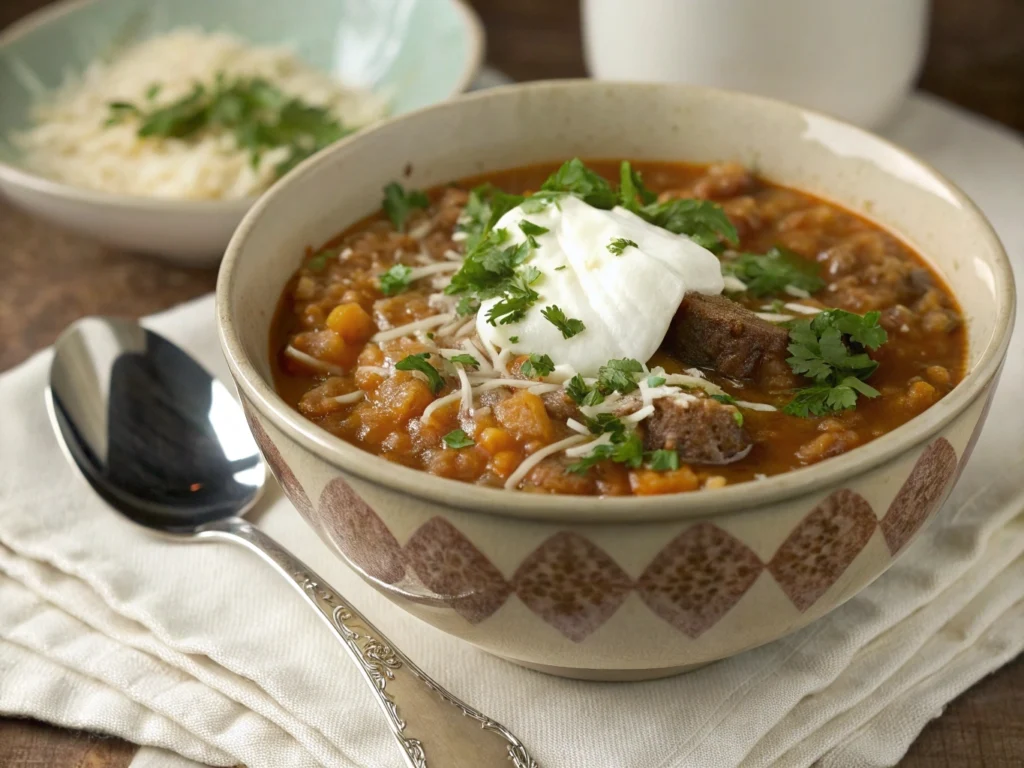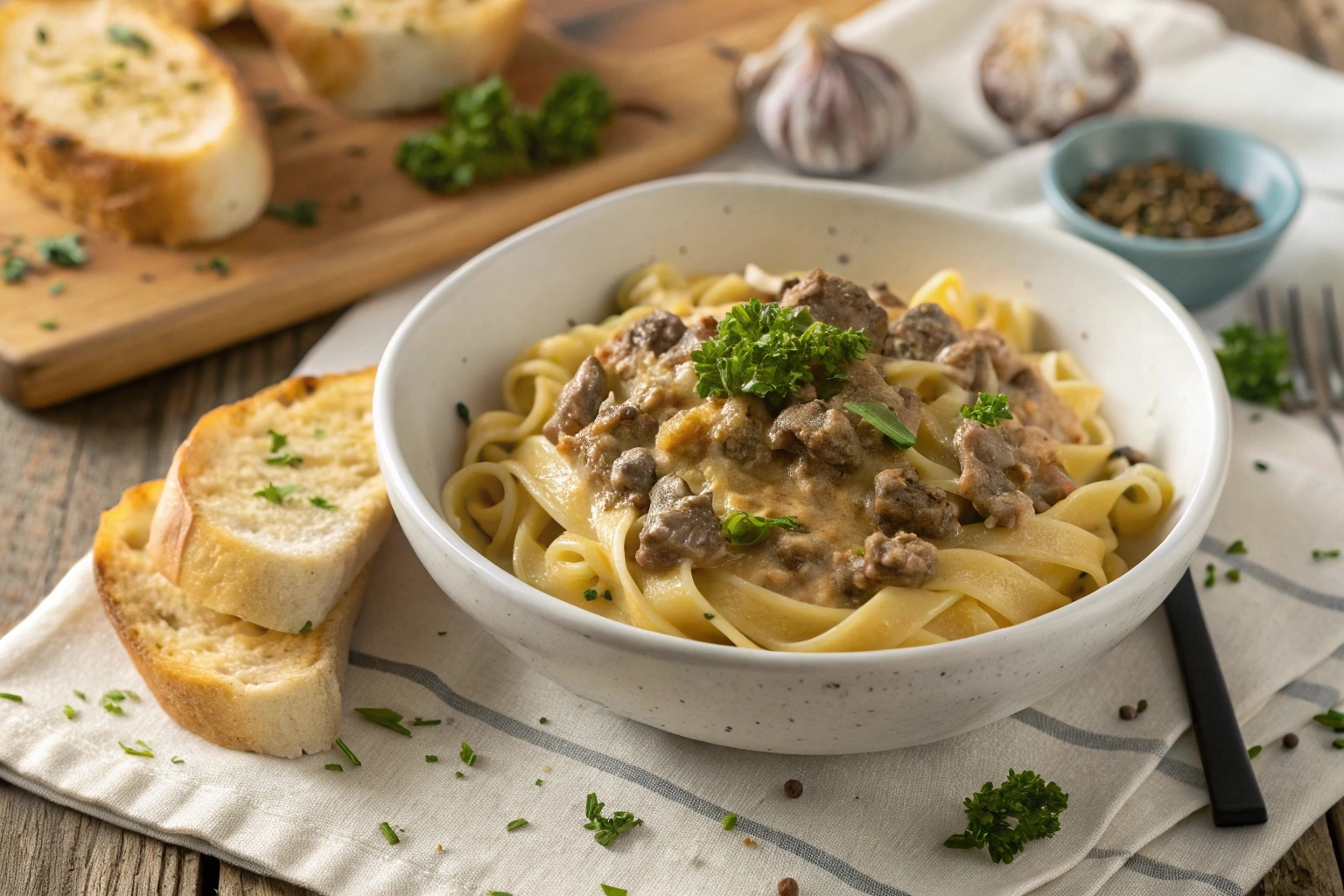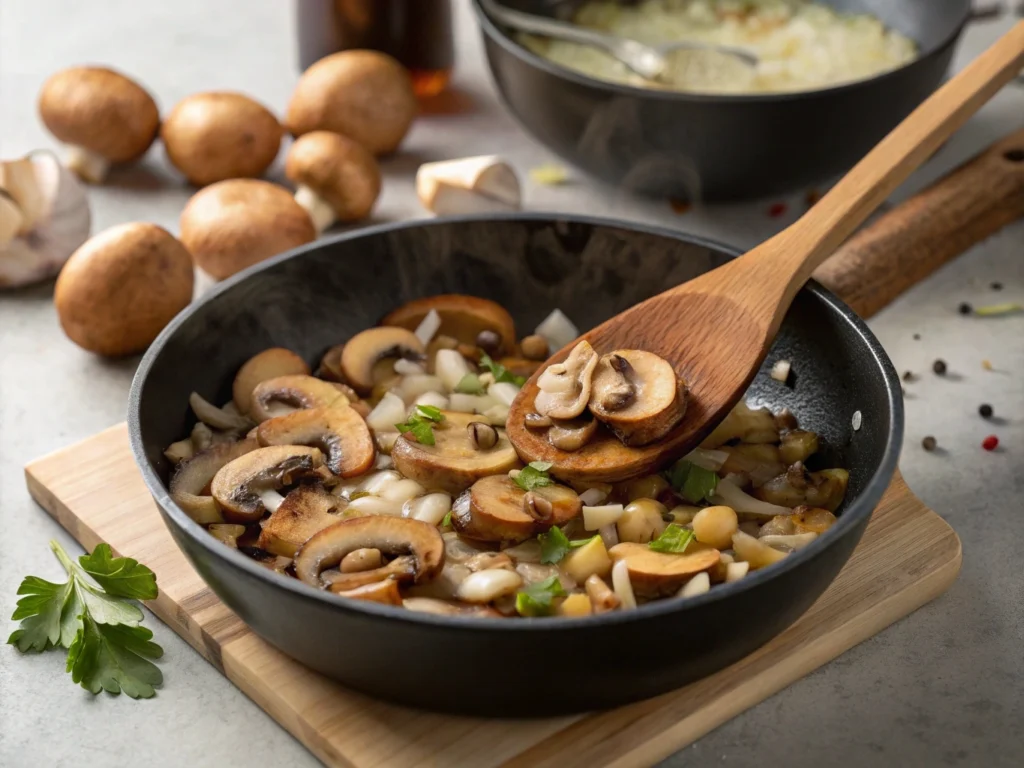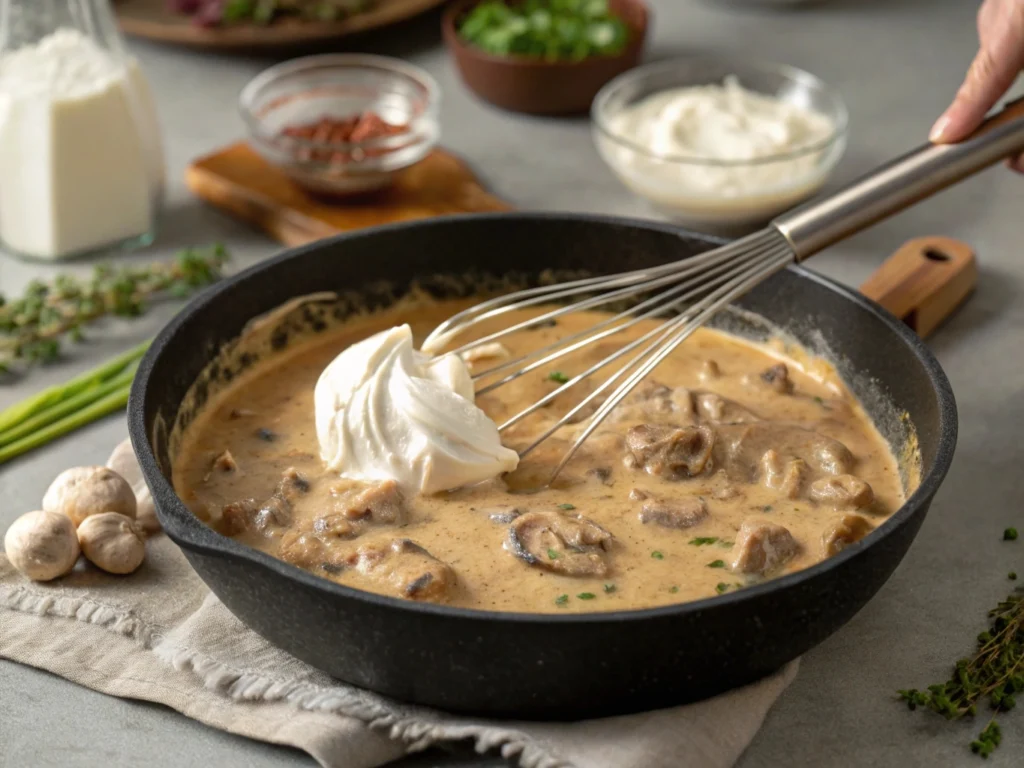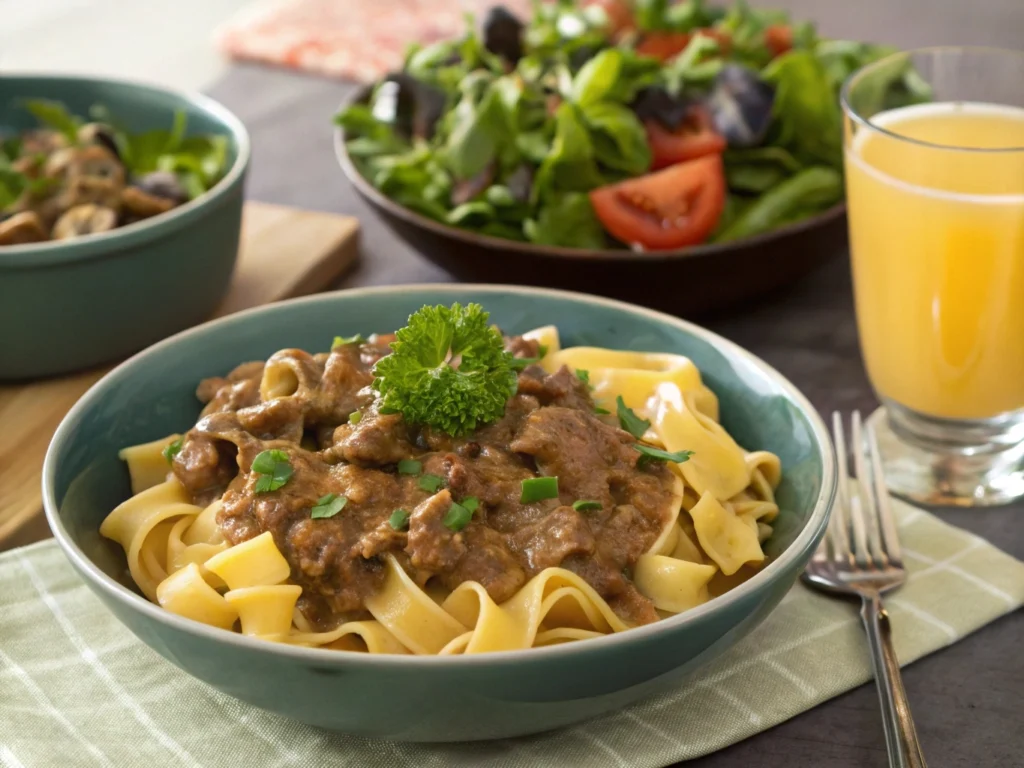Imagine the aroma of tender beef simmering in a rich red wine sauce, mingled with hints of garlic, fresh thyme, and caramelized onions wafting through your kitchen. Beef bourguignon isn’t just a dish it’s an experience, a love letter to French cuisine that transforms simple ingredients into pure magic. But here’s the twist: with a few power-packed secrets, you don’t need to be a gourmet chef to make it unforgettable. Ready to unlock the mystery behind this culinary masterpiece? Let’s dive into the delicious details!
Table of Contents
1. Selecting the Right Cut of Beef
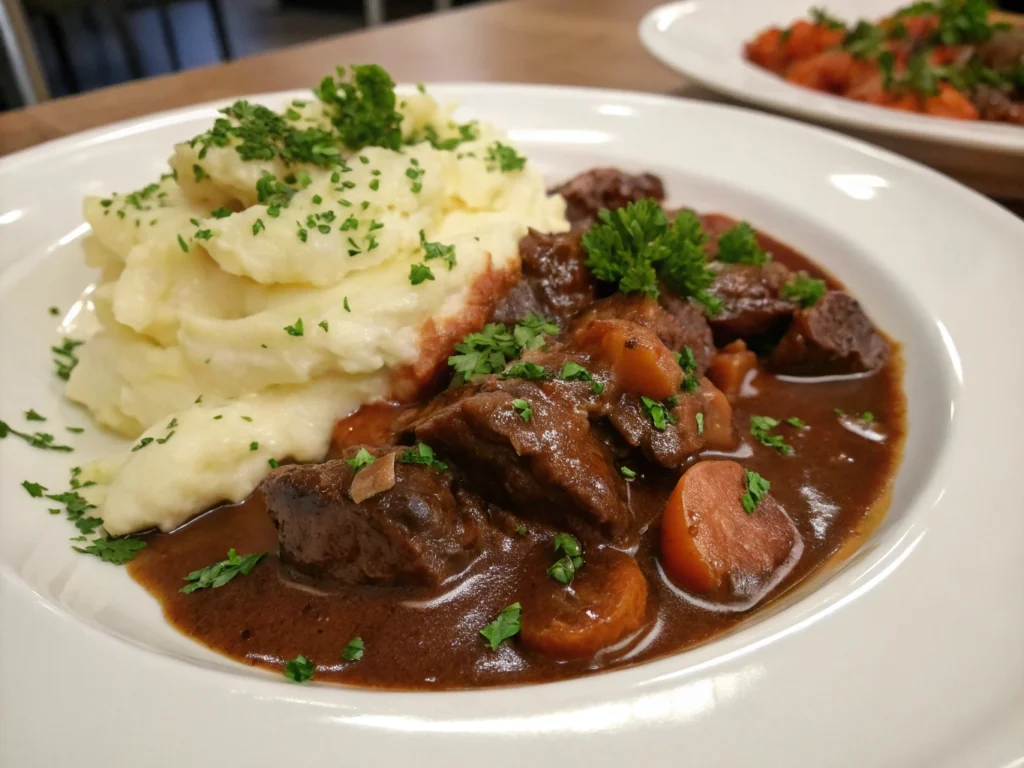
Why Chuck Roast Is the Star Ingredient
When it comes to crafting the perfect beef bourguignon, choosing the right cut of beef is essential. Chuck roast stands out as the ideal choice due to its rich marbling and ability to break down into tender, juicy bites when slow-cooked. Unlike leaner cuts, chuck retains its moisture, giving your dish a melt-in-your-mouth texture that’s hard to beat.
On the other hand, cuts like sirloin or tenderloin may seem tempting but often result in dry, chewy meat after hours of simmering. Instead, embrace the hearty flavor of chuck roast it’s a game-changer for achieving that authentic beef bourguignon experience.
Tips for Preparing the Beef
The way you prepare your beef can make or break your dish. Start by patting the meat dry with paper towels. This step ensures that the beef browns properly when seared, creating a flavorful crust that adds depth to the final dish.
Cut the beef into uniform, 2-inch cubes to guarantee even cooking. Uneven pieces can overcook or stay tough, disrupting the smooth texture of your beef bourguignon. Additionally, lightly season the beef with salt and pepper before searing to enhance its natural flavors.
Common Mistakes to Avoid
To make your beef bourguignon a success, steer clear of these common pitfalls:
- Using the wrong cut of beef: Avoid lean cuts, as they lack the fat needed for rich, tender results.
- Overcrowding the pan: When browning, work in small batches to allow proper caramelization. Crowded pans steam the meat instead of searing it.
- Skipping the sear: Never skip the step of browning the meat; it’s essential for that signature depth of flavor.
Exploring Alternative Cuts of Beef
While chuck roast is the classic choice, other cuts can work in a pinch. Brisket, with its slightly firmer texture, or beef shank, known for its richness, are excellent alternatives. Each offers a unique twist on the traditional beef bourguignon.
For more guidance on selecting beef cuts, refer to Allrecipes, This can help you find the perfect cut for your dish while understanding the benefits of each option.
2. The Role of Burgundy Wine
Choosing the Best Wine for Authentic Flavor
The wine you choose for your beef bourguignon is just as crucial as the beef itself. Burgundy wine, typically made from Pinot Noir grapes, is the traditional choice due to its deep, earthy flavor and ability to meld perfectly with the dish. However, if Burgundy isn’t available, a dry red wine like Côtes du Rhône or Merlot can be excellent substitutes.
For an elevated taste, select a wine you would enjoy drinking. This is important because, as the dish simmers, the wine reduces and its flavors concentrate, becoming a key component of your beef bourguignon.
How Much Wine to Use
Balance is key when incorporating wine into your beef bourguignon. Typically, you’ll need about two cups of wine for a standard recipe. This amount ensures the beef absorbs the flavors while leaving enough liquid for a rich sauce. Avoid using too much wine, as it can overwhelm the other ingredients, making the dish too sharp.
When in doubt, follow the French adage: “Cook with the wine you’ll pair with the meal.”
Fun Fact: The Origin of Beef Bourguignon
Beef bourguignon originated in Burgundy, France, a region renowned for its wine and hearty cuisine. Historically, this dish was considered peasant food, crafted to make the most of inexpensive cuts of beef and local Burgundy wine. Over time, it became a celebrated staple of French gastronomy, even earning a place in Julia Child’s Mastering the Art of French Cooking.
Pairing Wine with Beef Bourguignon
To enhance the dining experience, serve beef bourguignon with the same wine used in cooking. A medium-bodied red like Pinot Noir complements the dish’s richness without overpowering it. For more options, consult resources like Wine Folly for pairing suggestions that will bring out the best in your dish.
3. Building Layers of Flavor with Aromatics
Essential Ingredients in Beef Bourguignon
The magic of beef bourguignon lies in its layers of flavors, starting with classic aromatics. A traditional mirepoix onions, carrots, and celery—serves as the foundation. These vegetables infuse the dish with natural sweetness and depth, creating the perfect balance for the savory beef and bold wine.
Additionally, fresh herbs like thyme, bay leaves, and parsley are must-haves. These aromatics add complexity to the dish while keeping it rooted in its French origins. Don’t forget a few cloves of garlic for an extra touch of earthiness.
Cooking Tips for Aromatics
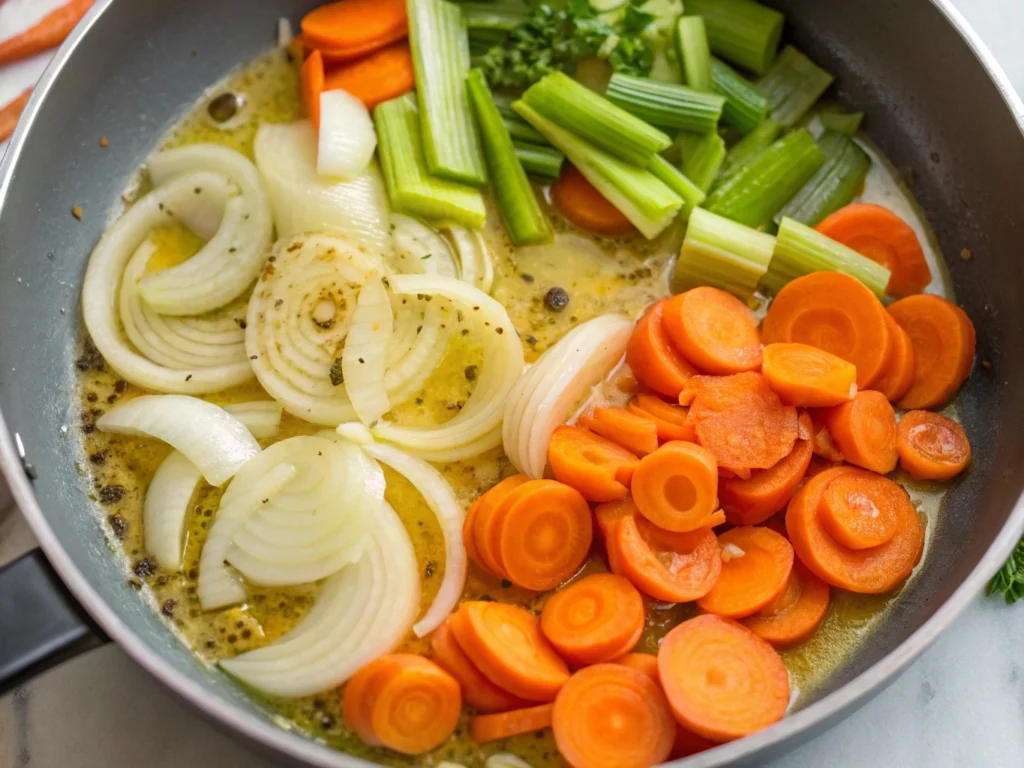
Cooking aromatics correctly is a crucial step that sets the stage for the rich flavors of beef bourguignon. Begin by sautéing the mirepoix in olive oil or butter until the vegetables soften and take on a slight golden hue. This process releases their natural sugars, enhancing the overall flavor profile of the dish.
For best results, add garlic toward the end of the sauté process. Garlic burns easily, so cooking it briefly ensures it enhances the dish without becoming bitter. Remember, every layer contributes to the final masterpiece.
Using Garlic and Shallots for Depth
To elevate your beef bourguignon, consider including shallots alongside garlic. Shallots have a mild, sweet flavor that complements the heartiness of the dish. Dice them finely and add them to the sautéed aromatics for a subtle yet noticeable enhancement.
In addition, crushed garlic cloves can be added directly to the braising liquid for a deeper, slow-infused flavor. This small adjustment transforms the sauce into something truly special, delivering the unmistakable aroma and taste of authentic French cuisine.
Balancing Aromatics for the Perfect Blend
The key to perfectly balancing aromatics in beef bourguignon is moderation. Too many herbs can overpower the other ingredients, while too little leaves the dish flat. A sprig or two of thyme, a single bay leaf, and a small handful of chopped parsley are just enough to enhance without overwhelming.
For a unique twist, consider tying the herbs into a bouquet garni, which can be easily removed before serving. This approach keeps the flavors consistent and prevents any herb fragments from lingering in the sauce.
For more inspiration on incorporating aromatics into French dishes, check out our article on How to Cook Beef Cheek Meat. Many of the techniques overlap, making it a valuable resource for mastering slow-cooked recipes.
4. Mastering the Art of Browning
Why Browning Matters
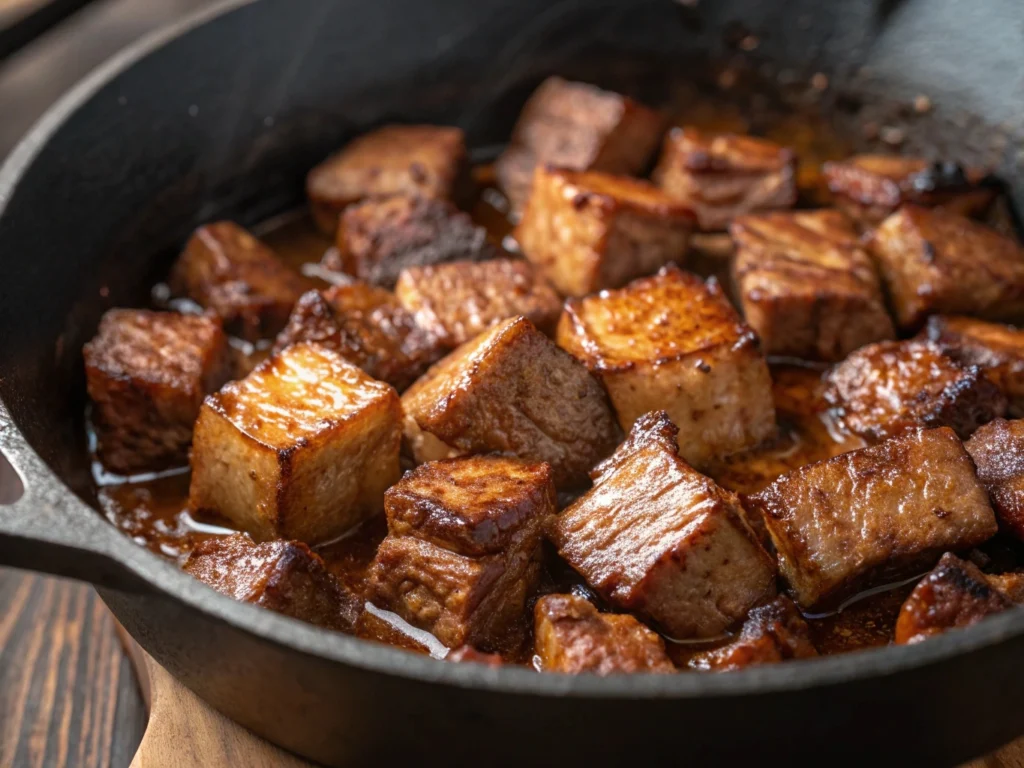
Browning the beef is one of the most critical steps in preparing beef bourguignon. This process develops a rich, caramelized crust on the meat, creating layers of flavor that will elevate the entire dish. Known as the Maillard reaction, browning gives the beef a deep, savory taste that pairs beautifully with the wine-based sauce.
However, rushing this step can compromise the final result. For the best flavor, ensure the beef is browned in small batches, allowing each piece to develop a proper sear.
Step-by-Step Guide to Browning Beef
- Dry the Beef: Pat the beef dry with paper towels to remove excess moisture. Wet surfaces prevent proper browning and lead to steaming instead.
- Season Generously: Sprinkle salt and pepper evenly on all sides of the beef before cooking. This enhances the flavor and promotes a delicious crust.
- Heat the Pan: Use a heavy-bottomed pot, such as a Dutch oven, and heat a small amount of oil until it shimmers.
- Work in Batches: Add a single layer of beef to the pan without overcrowding. Let the pieces sear for 2-3 minutes per side until golden brown.
By following these steps, your beef will have the ideal texture and flavor to build a superior beef bourguignon.
Common Pitfalls to Avoid
To achieve perfect browning, it’s important to avoid common mistakes:
- Overcrowding the Pan: Adding too much beef at once lowers the pan’s temperature, leading to steaming instead of searing.
- Using Low Heat: Insufficient heat prevents the Maillard reaction, resulting in bland, pale beef.
- Skipping the Sear: Failing to brown the beef means missing out on the deep flavors essential to authentic beef bourguignon.
For best results, always take your time with this step it’s worth the extra effort.
The Secret to Deglazing
After browning, don’t skip the deglazing process. Deglazing involves adding liquid to the hot pan to loosen the caramelized bits, or “fond,” stuck to the bottom. These browned bits are packed with flavor and become the backbone of the sauce.
Pour a splash of Burgundy wine into the pan and scrape the bottom with a wooden spoon. This step not only enhances the sauce but also ensures no flavor goes to waste.
5. Simmering to Perfection
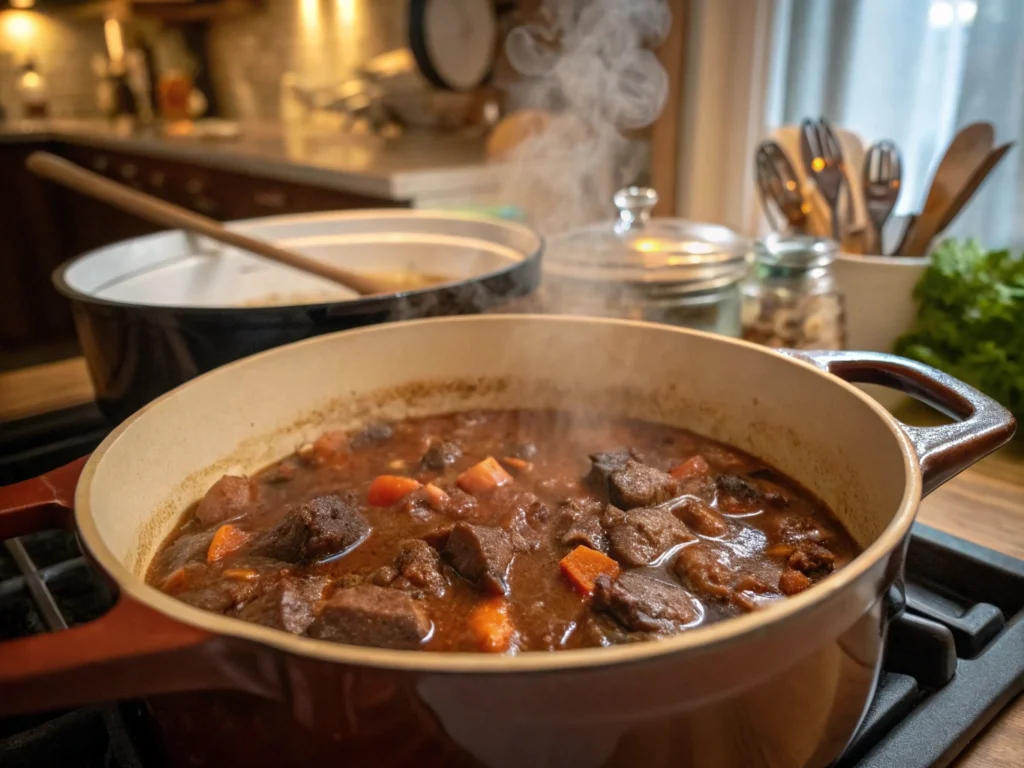
The Importance of Slow Cooking
The secret to achieving the tender, melt-in-your-mouth texture that defines beef bourguignon lies in slow cooking. Allowing the beef to braise gently over low heat for hours breaks down the connective tissue, resulting in a rich and velvety texture.
This method not only tenderizes the beef but also allows the flavors of the wine, aromatics, and herbs to meld beautifully. Whether you use a stovetop, oven, or slow cooker, the key is to maintain a consistent temperature to avoid overcooking or drying out the meat.
Adjusting Consistency
The sauce in beef bourguignon should be thick and luxurious, clinging perfectly to each piece of beef. To achieve this, monitor the sauce’s consistency as it cooks. If it becomes too thin, simmer the dish uncovered for the last 30 minutes to reduce the liquid.
Alternatively, you can create a beurre manié (a paste of softened butter and flour) and whisk it into the sauce to thicken it without altering the flavor.
Avoid Overcooking Vegetables
One common mistake is overcooking the vegetables, particularly the mushrooms and pearl onions that are added toward the end. These ingredients should retain some texture to provide contrast to the tender beef.
Add mushrooms and pearl onions in the last hour of cooking. This ensures they soak up the flavorful sauce without becoming mushy. For an extra layer of flavor, sauté them in butter before adding them to the pot.
Alternative Cooking Methods
While the oven is the traditional method for preparing beef bourguignon, you can adapt this dish to a slow cooker or pressure cooker for convenience.
- Slow Cooker: After browning the beef and preparing the sauce, transfer everything to the slow cooker. Cook on low for 7-8 hours for the best results.
- Pressure Cooker: Use a pressure cooker to cut the cooking time dramatically. Cook for about 40 minutes on high pressure, then allow for a natural release before thickening the sauce.
For more time-saving ideas, check out our Ground Beef Stroganoff Recipe, which offers tips for simplifying hearty, flavorful dishes.
FAQs
What is the difference between beef bourguignon and beef stew?
Beef bourguignon and beef stew may seem similar at first glance, but the two dishes have distinct differences. Beef stew is typically made with a broth or stock base and can include a variety of vegetables and seasonings, making it versatile and adaptable to many cuisines.
On the other hand, beef bourguignon is a French dish that stands out for its use of red wine—usually Burgundy wine—as a key ingredient in the sauce. This addition creates a rich, deep flavor that’s characteristic of French cuisine. Additionally, the aromatics and herbs in beef bourguignon are carefully selected to complement the wine, giving the dish a more refined and sophisticated taste.
What is special about beef bourguignon?
What sets beef bourguignon apart is its transformation of simple, humble ingredients into an elegant and flavorful dish. The slow braising process melds the rich flavors of tender beef, wine, and aromatics into a hearty, deeply satisfying meal.
This dish also carries a sense of tradition and sophistication, rooted in French culinary history. Whether served at a dinner party or enjoyed as comfort food, beef bourguignon offers a luxurious dining experience that feels both rustic and gourmet.
What cut of meat is best for beef bourguignon?
The best cut of meat for beef bourguignon is chuck roast, prized for its marbling and ability to become tender through slow cooking. Other excellent options include brisket or beef shank, both of which offer rich flavor and a melt-in-your-mouth texture when braised.
Avoid lean cuts like sirloin, as they lack the fat and connective tissue necessary for slow cooking. Using the right cut ensures your beef bourguignon will be flavorful and succulent.
What do the French eat with boeuf bourguignon?
In France, beef bourguignon is traditionally served with simple yet delicious accompaniments. Popular options include creamy mashed potatoes, buttered noodles, or crusty French bread to soak up the rich sauce.
For a lighter pairing, the French sometimes serve it alongside a crisp green salad or roasted vegetables. No matter the side dish, the focus remains on highlighting the robust flavors of the beef bourguignon.
Conclusion
Mastering beef bourguignon may seem like a culinary challenge, but with the right techniques, you can create a dish that’s as rewarding to cook as it is to eat. From choosing the perfect cut of beef to layering flavors with wine, aromatics, and careful browning, each step contributes to the dish’s signature depth and richness.
Slow cooking ensures the beef becomes melt-in-your-mouth tender, while thoughtful seasoning and proper preparation bring the recipe to life. Whether you’re hosting a dinner party or preparing a cozy family meal, beef bourguignon offers a timeless taste of French cuisine that’s sure to impress.
Now it’s your turn to bring this classic dish to your table. Follow these steps, experiment with flavors, and make it your own. Share your experience in the comments or explore more recipes to expand your cooking repertoire. Bon appétit!

